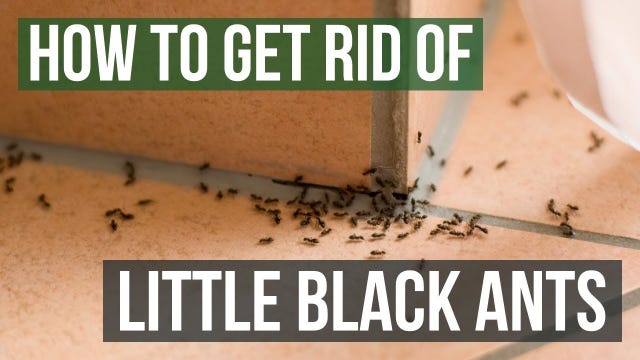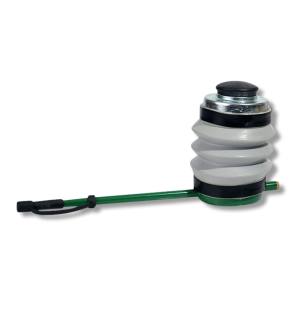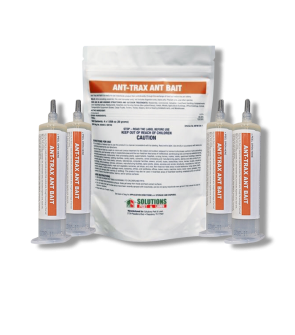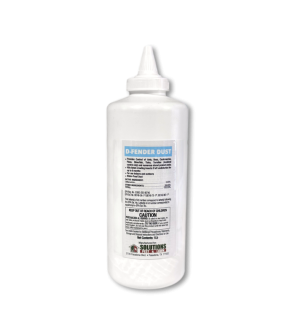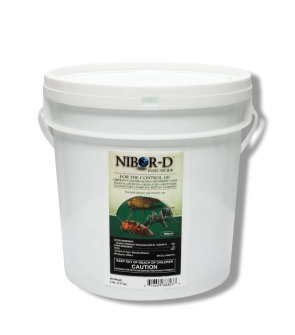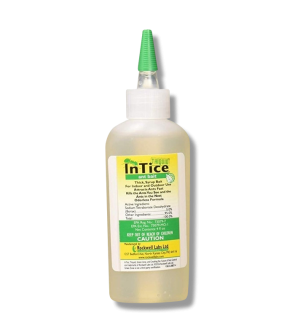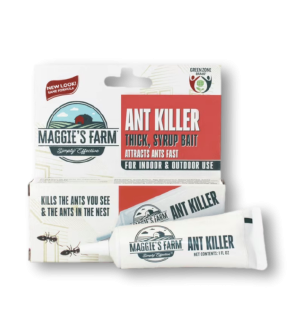Gain access to personalized product screening, the best pricing, rewards, and more!
Most Effective Products
Little Black Ants Control: How To Get Rid of Little Black Ants
This page is a little black ant control guide. Using the products and methods suggested, you will get control of little black ants. Follow this guide and use the recommended products, and we guarantee 100% control over little black ants.
Nothing is outstanding about the little black ant. They’re pretty straightforward, like their name states: they’re little, they’re black, and when they infest your home in large numbers, they’re very annoying. Little black ants are native to the United States and are widespread throughout the country but mainly concentrated on the East Coast.
Little black ants are found near wooded areas, in rotting wood, or close to pavement cracks. In your yard, they build their colonies under yard debris, rotting woodpiles, and piles of stones or logs.
While they prefer to live outdoors, little black ants can build their nests inside your home if the weather turns harsh. Their nests inside homes are usually in woodwork, cracks and crevices in walls, decaying wood, masonry, and behind facades. They can also be found in kitchen areas and bathrooms where food is available.
If your property has become overrun with little black ants, our DIY guide below can give you the knowledge and product recommendations needed to eliminate the infestation yourself. Read below for recommended products and the best strategy to tackle these troublesome insects.
Identification

Identification is extremely important for control because you must ensure you deal with little black ants before applying pesticides. Misidentification can lead to buying and applying the wrong products, which will cost you time and money. Below are the common characteristics that set little black ants apart.
- Little black ants are mostly jet-black but can also be dark brown.
- The workers are as small as 1.5 mm or 1/6 of an inch in length, and queens can measure up to 4 mm.
- They have a 12-segmented antennae as well as a three-segmented club.
- They have a small stinger but are too small to distinguish with the naked eye.
- The diet of little black ants consists of grease, oil, meat, fruits, and vegetables, as well as corn meal and sweets.
- The workers also feed on other insects, honeydew, and plant secretions.
- They are active both night and day in their search for food, and their colonies can reach up to 2,000 workers. While this is not as bad as other species, it can still be quite difficult to control.
Use the image and description above to properly identify little black ants on your property. If you are unsure, contact us, and we will help you identify the problem.
Inspection

Once you are certain you are dealing with little black ants, you should perform an inspection to pinpoint the areas of your home where these ants are commonly located and active.
Where To Inspect
Little black ants like to dwell in wooded areas, most notably in decaying wood or sidewalk cracks. In yards, they build their nests under rocks, rotting logs, and piles of bricks or lumber. While they prefer to live outdoors, little black ants can build their nests indoors under the right conditions.
Their nests have been located in homeowners' homes, usually in woodwork, wall voids, decaying wood, masonry, and behind facades. They can also be found in kitchen areas and wherever they can find food sources.
Begin your inspection outdoors. Inspect any decaying or rotting wood in your yard. Inspect tool sheds, gazebos, lumber, and woodpiles. Also, don't forget to look inside tree stumps, along pavements or sidewalks, under rocks, and general yard debris. Indoors inspect wall voids, under sinks (where the plumbing penetrates the walls), behind decaying wood, behind masonry, and in kitchens (where food spills and crumbs collect).
What To Look For
You're looking for little black ants and their foraging trails. Inspect foraging trails in all the places mentioned above. These trails will lead you to their nest. Once you have confirmed little black ant activity and their foraging trails, you will apply treatment here.
Treatment
Once you have confirmed little black ant activity, it is time to begin treatment. Remember to read all product labels, follow the application instructions on these labels, and stay safe by wearing personal protective equipment (PPE).
To get rid of little black ants, we recommend applying Supreme IT outdoors in your yard and then applying Ant-Trax Ant Bait and D-Fender Dust indoors to kill foraging worker ants.
Step 1: Outdoor Treatment with Supreme IT
Supreme IT is a powerful insecticide that treats over 75 insect pests. It is perfect for creating a barrier treatment because it not only kills but also repels ants. It also has residual (or long-term effects) that last up to 3 months.
We recommend using a 20-gallon hose-end sprayer for the application to treat the entire yard more efficiently.
Determine how much Supreme IT you will need by first calculating the square footage of your yard. To find the square footage, measure the length and width of the treatment area in feet, then multiply them together (length X width = square footage).
Supreme IT can be applied to treat ants at a rate of 1 fl. oz. per gallon of water per 1,000 sq. ft.
Make sure the sprayer control valve and water pump are off, and then attach the hose-end sprayer nozzle to the hose. Remove the reservoir and add the proper amount of Supreme IT based on your square footage calculations and the proper amount of water.
Reattach the reservoir to the nozzle and turn on the water hose. You are now ready to spray. Evenly distribute the entire product over your treatment area, keeping track of the product left in the reservoir. Spray your whole yard around ornamentals, yard debris, mulch beds, and anywhere else you have noticed little black ant activity.
If you find colonies or nests, drench them. To do this, simply spray all around the diameter of the opening of the nest and then saturate the nest with the Supreme IT solution.
Step 2: Indoor Treatment with D-Fender Dust

Apply this product inside cracks and crevices, along baseboards, behind electrical outlets (make sure to turn off the breakers first, and take the plastic covers off, also apply to the walls, next to the metal encasing of the electrical outlets) and into points of entry outside your property.
Step 3: Apply Ant-Trax Ant Bait
For indoor foraging little black ants, use Ant-Trax. Ant-Trax is an ant bait that the ants will carry back to the colony, and because it works slowly, it will eliminate any ant that comes in contact with it and a large colony population once it is carried back.
This product comes in a syringe for easy application. Apply a pea-size drop where Little Black ant activity has been observed. Separate each placement by at least one foot. Apply in countertops, kitchens, bathrooms, appliances, baseboards, window frames, and entry points.
Do not kill the foraging trails of ants that develop or clean the areas where the product was applied. The point is to let the ants feast undisturbed on the product and allow them to carry it back to the nest.
Allow 7 to 10 days to pass. Do not clean (use cleaning supplies) or kill the ants that will appear next to the baits.
Prevention
After successfully treating and getting rid of the little black ants, you will want to ensure they don't reestablish themselves on your property. Here are some preventative measures to take to ensure little black ants don't return:
- Start by getting rid of any yard debris that might give them harborage areas. Get rid of decaying wood and rotting food, such as woodpiles, lumber, logs, rocks, bricks, and general clutter in your yard. Eliminating any possible food sources will help you maintain a regular cleaning schedule.
- Pick up spills and food crumbs as soon as they occur. Vacuum and sweep regularly to keep your home as clean as possible.
- Repair leaking faucets or faulty plumbing to fix moisture issues around the home. Finally, trim vegetation away from your property to make it harder for ants to access your home.
- Finally, remember to apply Supreme IT every 90 days around the perimeter of your property to make it harder for little black ants to get inside.
Key Takeaways
What Are Little Black Ants?
- Little black ants are a tiny ant species notorious for invading homes and yards in large numbers when food is available for them to forage. They are also attracted to moisture-rich areas and will nest in or around your home if the conditions are conducive.
How To Get Rid of Little Black Ants Indoors and Outdoors
- To get rid of little black ants, apply a broadcast treatment of Supreme IT over your yard and find and drench any ant mounds you encounter with the solution.
- Indoors, apply Ant-Trax Ant Bait to kill foraging worker ants and the entire population. Use D-Fender Dust to treat points of entry and cracks and crevices where they like to hide.
Preventing Little Black Ant Reinfestation
- Prevent little black ants from returning by eliminating food sources via cleanup, addressing moisture issues, and clearing up yard debris.
- Preventative applications of Supreme IT around your yard and home every quarter can keep little black ants away long-term.






